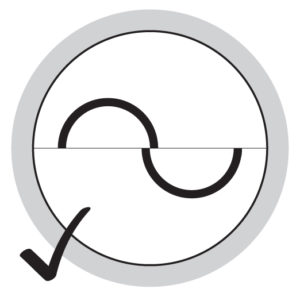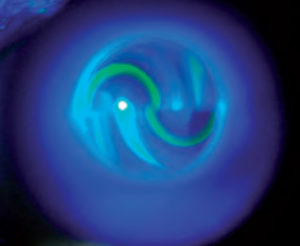Slit lamp set up:
- Place the probe in the probe holder. Make sure you support the neck while you do this.
- For traditional probes, line up the zeros. For Tonosafe, ensure the flat edge is at the top.
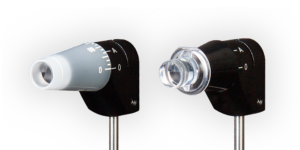
- Set the dial to the 15mmHg mark.
- Place the tonometer on the guide plate. It can go in either circular slot to start with. You only need to swap the slot if you feel the probe is at the wrong angle to catch the corneal apex. The guide plate should be placed with the tapered end towards the patient.
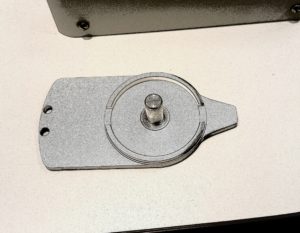
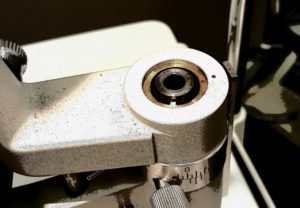
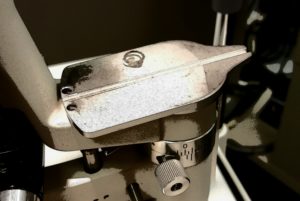
- Clean chin rest and forehead bar in front of patient.
- Set magnification to x10.
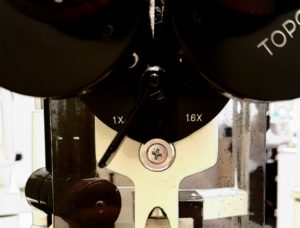
- Adjust illumination to maximum.
- Flip to the cobalt blue filter.
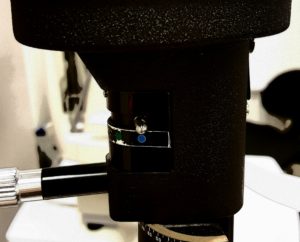
- Set illumination system to 45°. Put on your right side for the patient’s left eye. Put on your left side for the patient’s right eye.
Patient set up:
- Explain procedure to patient: It is important the patient fully understands what you are going to do, including the (minimal) risks involved.
- Check for allergies.
- Make sure that the patient doesn’t have any tight clothing around the neck.
- Ask the patient to remove any hats. Look for anything else that may obstruct the tonometer e.g. Dermatocalasis, unkempt eye brows, facial hair etc.
- Adjust the patient’s chair and slit lamp height.
- Instil chosen anaesthetic and fluorescein combination – make sure you tell the patient it stings and it’s yellow!
- Note drops used, time used and their expiry on the record card.
- Ask the patient to place their chin on the chin rest; forehead against the bar. Remind them to keep still, keep their teeth together, and try not to hold their breath.
Goldmann procedure:
- Ask the patient to fixate a distant object.
- Hold the upper lid against the patient’s brow. Try to make sure you are not touching the globe. If the patient has a wide palpebral aperture you may get away with not holding the lids.
- Come close to the eye and briefly touch the cornea. Make sure you are ‘just’ touching the corneal apex. As soon as the mires appear you should stop nudging the tonometer forward.
- Adjust the dial on the side of the tonometer to position the mires so that their inner edges are touching. Read off the number on the dial, multiplying by 10 to get the reading in mmHg.
- Note IOP measurement including the time the IOP was taken.
